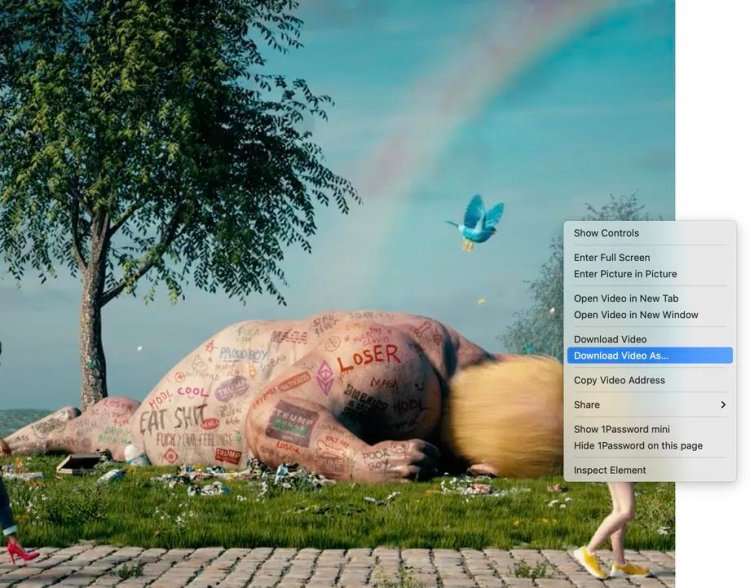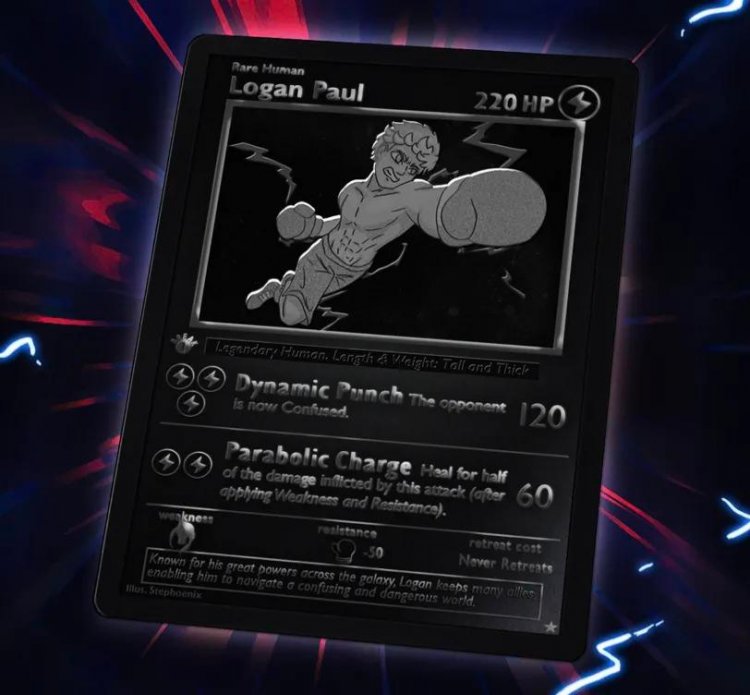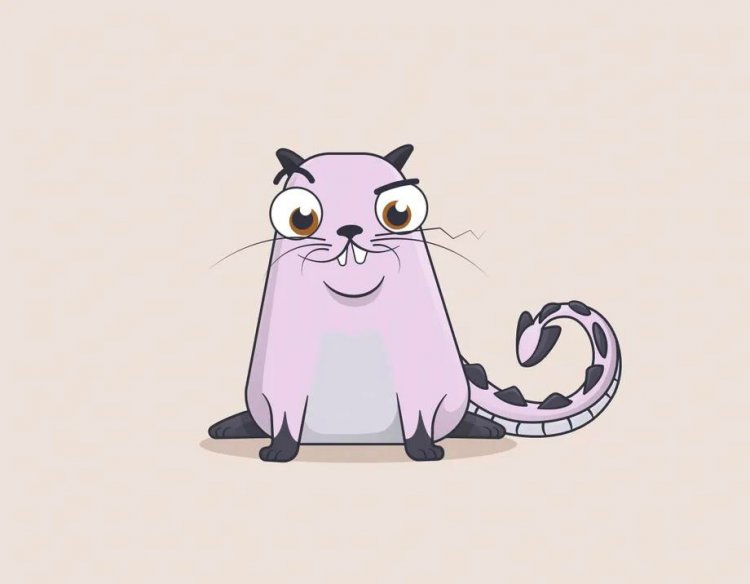NFTs, explained: what they are, and why they’re suddenly worth millions
NFTs, or non-fungible tokens, have been A Thing for a while now, but what’s the meaning of "NFT"? A couple of high-profile stories have made us stop and go "Hey... what exactly are these things?" And you may have had the same question.

There’s nothing like an explosion of blockchain news to leave you thinking, “Um… what’s going on here?” That’s the feeling I’ve experienced while reading about Grimes getting millions of dollars for NFTs or about Nyan Cat being sold as one. And by the time we all thought we sort of knew what the deal was, the founder of Twitter put an autographed tweetup for sale as an NFT. Now, months after we first published this explainer, we’re still seeing headlines about people paying house-money for clip art of rocks — and my mom still doesn’t really understand what an NFT is.
You might be wondering: what is an NFT, anyhow?
After literal hours of reading, I think I know. I also think I’m going to cry.
Okay, let’s start with the basics:
WHAT IS AN NFT? WHAT DOES NFT STAND FOR?
Non-fungible token.
That doesn’t make it any clearer.
Right, sorry. “Non-fungible” more or less means that it’s unique and can’t be replaced with something else. For example, a bitcoin is fungible — trade one for another bitcoin, and you’ll have exactly the same thing. A one-of-a-kind trading card, however, is non-fungible. If you traded it for a different card, you’d have something completely different. You gave up a Squirtle, and got a 1909 T206 Honus Wagner, which StadiumTalk calls “the Mona Lisa of baseball cards.” (I’ll take their word for it.)
How do NFTs work?
At a very high level, most NFTs are part of the Ethereum blockchain. Ethereum is a cryptocurrency, like bitcoin or dogecoin, but its blockchain also supports these NFTs, which store extra information that makes them work differently from, say, an ETH coin. It is worth noting that other blockchains can implement their own versions of NFTs. (Some already have.)
What’s worth picking up at the NFT supermarket?
NFTs can really be anything digital (such as drawings, music, your brain downloaded and turned into an AI), but a lot of the current excitement is around using the tech to sell digital art.
/cdn.vox-cdn.com/uploads/chorus_asset/file/22341197/doge.gif)
Dogecoin isn’t an NFT. But this GIF of a dogecoin is. GIF: NyanCat on OpenSea
You mean, like, people buying my good tweets?
I don’t think anyone can stop you, but that’s not really what I meant. A lot of the conversation is about NFTs as an evolution of fine art collecting, only with digital art.
(Side note, when coming up with the line “buying my good tweets,” we were trying to think of something so silly that it wouldn’t be a real thing. So of course, the founder of Twitter sold one for just under $3 million shortly after we posted the article.)
Do people really think this will become like art collecting?
I’m sure some people really hope so — like whoever paid almost $390,000 for a 50-second video by Grimes or the person who paid $6.6 million for a video by Beeple. Actually, one of Beeple’s pieces was auctioned at Christie’s, the famou—

Yoink! Image: Beeple
Sorry, I was busy right-clicking on that Beeple video and downloading the same file the person paid millions of dollars for.
Wow, rude. But yeah, that’s where it gets a bit awkward. You can copy a digital file as many times as you want, including the art that’s included with an NFT.
But NFTs are designed to give you something that can’t be copied: ownership of the work (though the artist can still retain the copyright and reproduction rights, just like with physical artwork). To put it in terms of physical art collecting: anyone can buy a Monet print. But only one person can own the original.
No shade to Beeple, but the video isn’t really a Monet.
What do you think of the $3,600 Gucci Ghost? Also, you didn’t let me finish earlier. That image that Beeple was auctioning off at Christie’s ended up selling for $69 million, which, by the way, is $15 million more than Monet’s painting Nymphéas sold for in 2014.
/cdn.vox-cdn.com/uploads/chorus_asset/file/22341209/GucciGhost.gif)
This last sold for $3,600, but the current owner is asking for $16,300. GIF by Trevor Andrew
Whoever got that Monet can actually appreciate it as a physical object. With digital art, a copy is literally as good as the original.
But the flex of owning an original Beeple...
I think I remember hearing that NFTs are already over. Didn’t the boom go bust?
But surely you’ve heard of penguin communities?
P...Penguin communities?
Right, so... people have long built communities based on things they own, and now it’s happening with NFTs. One community that’s been exceedingly popular revolves around a collection of NFTs called Pudgy Penguins, but it’s not the only community built up around the tokens. It could be argued that one of the earliest NFT projects, CryptoPunks, has a community around it, and there are other animal-themed projects like the Bored Ape Yacht Club that have their own clique.
Of course, the communal activities depend on the community. For Pudgy Penguin or Bored Ape owners, it seems to involve vibing and sharing memes on Discord, or complimenting each other on their Pudgy Penguin Twitter avatars.
What’s the point of NFTs?
That really depends on whether you’re an artist or a buyer.
I’m an artist.
First off: I’m proud of you. Way to go. You might be interested in NFTs because it gives you a way to sell work that there otherwise might not be much of a market for. If you come up with a really cool digital sticker idea, what are you going to do? Sell it on the iMessage App Store? No way.
Also, NFTs have a feature that you can enable that will pay you a percentage every time the NFT is sold or changes hands, making sure that if your work gets super popular and balloons in value, you’ll see some of that benefit.
I’m a buyer.
One of the obvious benefits of buying art is it lets you financially support artists you like, and that’s true with NFTs (which are way trendier than, like, Telegram stickers). Buying an NFT also usually gets you some basic usage rights, like being able to post the image online or set it as your profile picture. Plus, of course, there are bragging rights that you own the art, with a blockchain entry to back it up.
No, I meant I’m a collector.
Ah, okay, yes. NFTs can work like any other speculative asset, where you buy it and hope that the value of it goes up one day, so you can sell it for a profit. I feel kind of dirty for talking about that, though.
So every NFT is unique?
In the boring, technical sense every NFT is a unique token on the blockchain. But while it could be like a van Gogh, where there’s only one definitive actual version, it could also be like a trading card, where there are 50 or hundreds of numbered copies of the same artwork.
Who would pay hundreds of thousands of dollars for what basically amounts to a trading card?
Well, that’s part of what makes NFTs so messy. Some people treat them like they’re the future of fine art collecting (read: as a playground for the mega-rich), and some people treat them like Pokémon cards (where they’re accessible to normal people but also a playground for the mega-rich). Speaking of Pokémon cards, Logan Paul just sold some NFTs relating to a million-dollar box of the—
Please stop. I hate where this is going.

You’ve activated my trap card (which sold for $17,000). Image by Logan Paul
Yeah, he sold NFT video clips, which are just clips from a video you can watch on YouTube anytime you want, for up to $20,000. He also sold NFTs of a Logan Paul Pokémon card.
Who paid $20,000 for a video clip of Logan Paul?!
A fool and their money are soon parted, I guess?
It would be hilarious if Logan Paul decided to sell 50 more NFTs of the exact same video.
Linkin Park’s Mike Shinoda (who also sold some NFTs that included a song) actually talked about that. It’s totally a thing someone could do if they were, in his words, “an opportunist crooked jerk.” I’m not saying that Logan Paul is that, just that you should be careful who you buy from.
Is NFTs mainstream now?
It depends on what you mean. If you’re asking if, say, my mom owns one, the answer is no.
:no_upscale()/cdn.vox-cdn.com/uploads/chorus_asset/file/22791317/Screen_Shot_2021_08_18_at_3.38.15_PM.png)
But we have seen big brands and celebrities like Marvel and Wayne Gretzky launch their own NFTs, which seem to be aimed at more traditional collectors, rather than crypto-enthusiasts. While I don’t think I’d call NFTs “mainstream” in the way that smartphones are mainstream, or Star Wars is mainstream, they do seem to have, at least to some extent, shown some staying power even outside of the cryptosphere.
But what does The Youth think of them?
Ah yes, excellent question. We here at The Verge have an interest in what the next generation is doing, and it certainly does seem like some of them have been experimenting with NFTs. An 18-year-old who goes by the name FEWOCiOUS says that his NFT drops have netted over $17 million — obviously, most haven’t had the same success. The New York Times talked to a few teens in the NFC space, and some said they used NFTs as a way to get used to working on a project with a team or to just earn some spending money.
Can I buy this article as an NFT?
No, but technically anything digital could be sold as an NFT (including articles from Quartz and The New York Times, provided you have anywhere from $1,800 to $560,000). deadmau5 has sold digitally animated stickers. William Shatner has sold Shatner-themed trading cards (one of which was apparently an X-ray of his teeth).

This one I like. Maybe not for $700, but... Image by deadmau5 and Mad Dog Jones
Gross. Actually, could I buy someone’s teeth as an NFT?
There have been some attempts at connecting NFTs to real-world objects, often as a sort of verification method. Nike has patented a method to verify sneakers’ authenticity using an NFT system, which it calls CryptoKicks. But so far, I haven’t found any teeth, no. I’m scared to look.
Look? Where?
There are several marketplaces that have popped up around NFTs, which allow people to buy and sell. These include OpenSea, Raible, and Grimes’ choice, Nifty Gateway, but there are plenty of others.
I’ve heard there were kittens involved. Tell me about the kittens.
NFTs really became technically possible when the Ethereum blockchain added support for them as part of a new standard. Of course, one of the first uses was a game called CryptoKitties that allowed users to trade and sell virtual kittens. Thank you, internet.
I love kittens.
Not as much as the person who paid over $170,000 for one.

My face when I’m worth $170K. Image: Cryptokitties.co
What's Your Reaction?


















